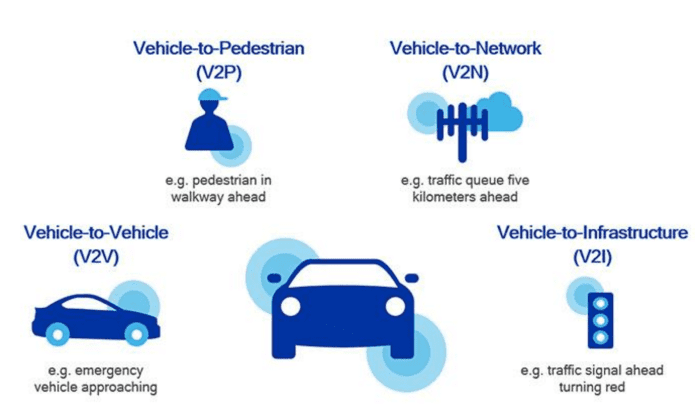The research firm said V2X still needs a credible installation strategy
ABI Research said V2X (vehicle-to-everything) communicaitons is finally gaining momentum in the smart mobility industry, with a growing number of initiatives, trials and product launches.
The search firm said the cellular technology, which is being promoted by the 5G Automotive Association (5GAA), offers a potentially more flexible alternative to the legacy IEEE 802.11p.
ABI Research explained that V2X technology use cases will now include collective perception, remote sensor fusion, and cooperative mobility. This is happening as awareness grows surrounding the critical role of bringing the reliability and robustness needed for level 4/5 vehicle automation, the study said.
“Though gaining traction, the V2X industry has not yet come up with a credible, convincing strategy for widespread installation, adoption, and use,” said Dominique Bonte, managing director and vice president at ABI Research. “Relying on consumers to pay for optional V2X functionality and thereby achieving widespread consumer adoption within reasonable timeframes is wishful thinking, especially when taking into account long vehicle replacement cycles.”
“A more realistic scenario would be to equip vehicles designed for car sharing with V2X tech within smart city and Mobility-as-a-Service contexts,” Bonte added. “This would avoid the pitfalls of B2C models and instead leverage fleet-based B2B approaches,” the executiv added.
In the meantime, the vehicle-to-everything paradigm is becoming increasingly diversified and will extend to market adjacencies like vehicle-to-home (V2H) and vehicle-to-grid (V2G), the research firm said. Connections to homes and the grid comes in addition to vehicle-to-vehicle, vehicle-to-infrastructure, vehicle-to-pedestrian and vehicle-to-network connections considered by V2X.
It will evolve into a “ubiquitous IoT-like, cross vertical connectivity and application paradigm, one that reaches far beyond the initial narrow scope of active vehicle safety and the DSRC/WAVE protocol,” added Bonte.

